- Messages
- 393
- Likes
- 2
- City
- Houston
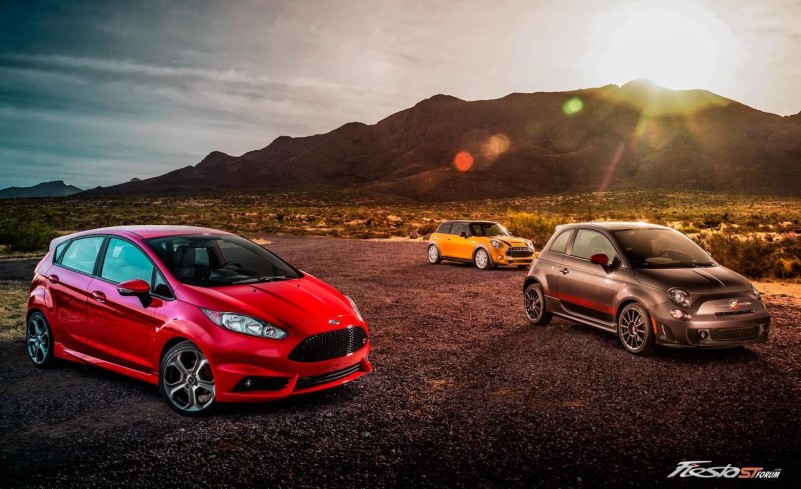
Sitting 80 miles north of the Mexican border, in the epicenter of America?s pepper-growing belt, is the village of Hatch, New Mexico. A small farming community of 1648 inhabitants, Hatch is famous for the chile peppers that bear the town?s name. In fact, Hatch is the ?Chile Capital of the World.? It?s possible that this title might be self-administered. The town even has an annual Labor Day festival to celebrate the mouth-numbing power of its chiles. Based on more than just spelling, rest assured that the little town of Hatch does not consider the Chili?s restaurant chain an authentic outpost of Tex-Mex cuisine.
But chiles, the peppers, are everywhere in Hatch. They?re growing in the fields just outside downtown and drying in clusters called chile ristras at roadside stands. This tiny town built on hotness seemed like the perfect destination for a test of hatchbacks with high Scoville ratings. Why? Well, if you?ve ever had a cheeseburger smothered in Hatch chiles, you?d understand. Hatch?s peppers transform an ordinary cheeseburger into something bordering on the transcendental. Which is sort of what happens when a carmaker turns a dull economy car into a hot hatch.
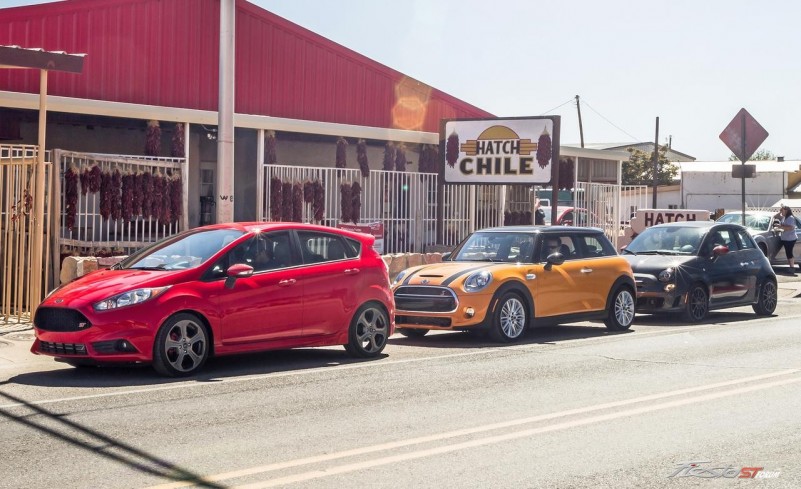
With a price target of $25,000, we invited three cars to compete. The Mini Cooper S is freshly redone and the newest of the bunch. It might look like the same old Mini, but it?s larger and more powerful than before. Making the heat is a 189-hp, turbocharged 2.0-liter four designed by Mini?s parent company, BMW.
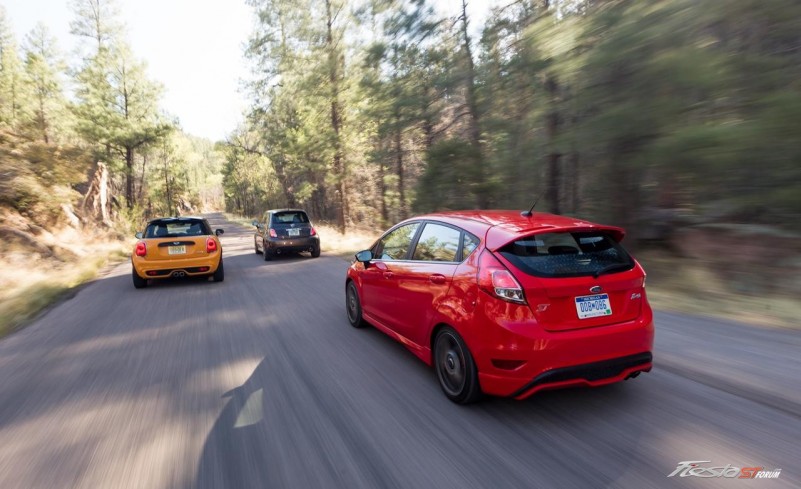
For its initial comparison-test appearance, we chose the Ford Fiesta in the ST guise that wowed every one of us last year and won itself a place on our 10Best list. The third entry is the weaponized Fiat 500, the Abarth edition. A hellion of a car with an unmuffled 1.4-liter turbo four, the Abarth made the cut despite losing a comparison test a couple of years ago because it?s still a sub-$30,000 car we can get excited about, and it also competes directly with this set.
We don?t usually issue comparo mulligans, but we thought the Abarth deserved a second chance since its mark of Cain came from a *substantially more expensive car, a $32,600 Mini Cooper Works.
Aside from smoked headlights and taillights, the 160-hp Abarth is unchanged from its previous defeat. Its 1.4-liter four and exhaust continue to bark with the menace of half a *Ferrari F40, but the Abarth has very little bite. Accelerating to 60 mph took 7.0 seconds, just a few ticks off the Ford and the Mini, but that?s not the whole story. In normal driving, the engine suffers from serious turbo lag below 3000 rpm, and the Fiat has the least amount of torque (170 pound-feet) in the group. That lag and dearth of torque contribute to annoying surges and flat spots in the power delivery. With more displacement and more torque than the Fiat, the Ford and the Mini accelerate without heaving and jerking around.
The Mini and the Ford are also more comfortable than the Fiat, whose seats reminded one editor of sitting on a stack of telephone books. Fiat places the driver far off the floor, and an awkwardly large steering wheel doesn?t adjust for reach. So either the pedals are too close or the steering wheel is too far away. The hard-plastic interior trim and the digital displays look about 10 years behind the others. At least the seats have center armrests to keep your arm from getting fatigued, but every other part of your being will grow tired of this car.
Shifting the 500?s five-speed is easy, but the shifter flops from gear to gear without any grace or mechanical precision. A mushy clutch pedal lacks feedback and tactility. The steering twitches and reports what?s happening at the Pirelli P Zero Nero tires, but the 0.82-g skidpad grip means that not much is actually happening. Body roll is excessive, and yet the ride is clumsier than the Mini?s and Ford?s.
Under braking, the Abarth becomes seriously unsettled as it dives deeply into its front tires. With the load thrown forward, the rear end lightens alarmingly. Add any steering input and the rear end will swing wide until the stability control catches it. Even stopping hard in a straight line upsets the Abarth?s stability. Braking from 70 to zero mph took a very long 195 feet. A dusty tarmac is largely to blame for that lengthy stop; in its previous test, the Abarth stopped from 70 in 172 feet.
As equipped, the Abarth cost $25,995. We?d need at least a $5000 discount to consider it. Until that happens, the 500 Abarth won?t be getting any more mulligans.
Every time the Mini gets a BMW makeover, it emerges slightly larger, like an eight-sevenths-scale version of its predecessor. Now in its third generation, the modern Mini is larger in width, length, and wheelbase. It looks like a bloated version of the Mini that debuted in 2002, or, basically, a Paceman. Mini left the two-box shape alone but worked the detailing. Gone is the blunt, short nose of the last Mini. The headlights have grown and receded, and a large, black bumper bar puckers out of the grille. Astride the hatch are two giant red taillights.
More space awaits occupants of this new Mini, especially in the now-habitable back seat. The driving position remains low, but it?s easy to get comfortable inside. The upright windshield is more than an arm?s length away from the driver, which means you?ll have to move out of the seat to reach the switchgear mounted on the windshield frame. Unlike the base Fiat 500 and Ford Fiesta, both of which can be bought out of the $15,000 toy bin, the cheapest Mini Cooper isn?t all that cheap at just over $20,000. But you can see where the money went in the interior. The plastic quality is better than in the Fiat and Ford, chrome details and switches abound, and there are high-resolution displays that wouldn?t look out of place in a 7-series. It?s not all good, though; we disliked the dorky multicolored LED ring surrounding the audio controls, and we were annoyed by a persistent rattle behind the instrument panel.
All the Mini?s dimensional growth is a result of switching to BMW?s new front-drive UKL architecture. The new platform produces a 2771-pound curb weight, or a roughly 125-pound gain. Offsetting the poundage is a new 2.0-liter turbo four that makes 189 horsepower at 6000 rpm and an easy 207 pound-feet of torque at 1250 rpm. There?s no wait for power, just a linear and hard pull from idle to the 6500-rpm redline. No mechanical coarseness or bad vibes come into the cabin, either, only a pleasant growl under hard acceleration. Next to the two other cars, the Mini?s engine works with the oily smoothness of a D.C. pol interviewing summer interns.
Shifting the six-speed manual as quickly as possible yielded a zero-to-60 time of 6.8 seconds. Our Cooper S arrived with a relatively green and tight 689-mile engine. With more miles on the odometer, we?re confident we could knock a tenth or two off that time. Even so, with the exception of its 30- and 60-mph sprint times, the Cooper S took every acceleration contest. And, despite having the largest engine in the group, the Mini returned a test-best 30 mpg.
Our Cooper couldn?t quite hang with the Fiesta ST on the switchback roads of New Mexico?s Gila National Forest. Mini outfitted our Cooper S with no-cost all-season tires that lack bite?summer tires are standard. Even on 17-inch wheels with run-flat tires, there?s a softness and slowness to the Mini?s chassis and steering that remind us of the latest BMWs. Largely due to the minivan-grade tires and the dusty surface, the skidpad grip and braking performance numbers are unimpressive. The Fiesta ST had no problem besting the Mini?s 0.84 g of grip and 191-foot braking distance. On the plus side, this Mini does ride better than these competitors.
Although it bore a larger number on its window sticker than the two other cars, the Mini?s $27,595 price could easily be cut by $1950 by omitting the pano*ramic sunroof, rain-sensing wipers and auto lights, anthracite headliner, black hood stripes, white turn-signal lenses, and the rear spoiler. Those options don?t improve the Mini one bit, but summer tires certainly would
It didn?t take long for the ST to emerge as our winner. ?Driving one will bring joy to your life,? wrote technical editor and aspiring life coach Eric Tingwall.
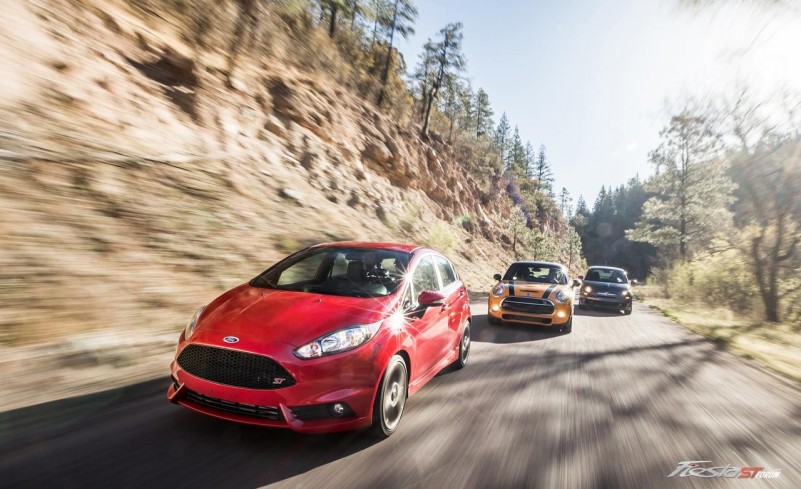
What gives the ST the win is near-dynamic perfection that is so much more than just class-leading braking and skidpad numbers. The firm steering serves up road texture, loads up perfectly under cornering, and will place the car within millimeters of where you want to be. The front tires dig into a corner with eagerness, but without the dartiness of a Focus ST. Depending on how you transfer the wheel loading or apply power, the Fiesta will lose grip by understeering. Or sliding all four tires. Or it will even swing its hindquarters wide if provoked. In other words, exactly how a car should behave. There are no false moves, just a gradual report of the developing-grip situation coming through the steering and optional Recaro seats. Those $1995 seats might be too tight for some, but they hard-wire your body to the chassis.
An engine borrowed from a Fusion is not exactly a selling point, but the Fiesta?s version is more power*ful and hums an intake-rich tune when you crack open the throttle. Despite its family-sedan lineage, the 197-hp, turbocharged 1.6-liter four-cylinder engine put down a best-in-test time of 6.7 seconds to 60. Like most of the great ones, this car only comes with a manual transmission. Clutch engagement is creamy, and the six-speed?s shifter is light to the touch and deliberate during gearchanges.
The Fiesta always wants to play, but it?s a car that won?t keep poking you when you?re not in the mood. The springs and dampers have just enough compliance to not be annoying, and the 1.6-liter turbo acts as if it?s back in a Fusion when you?re in commuter-drone mode.
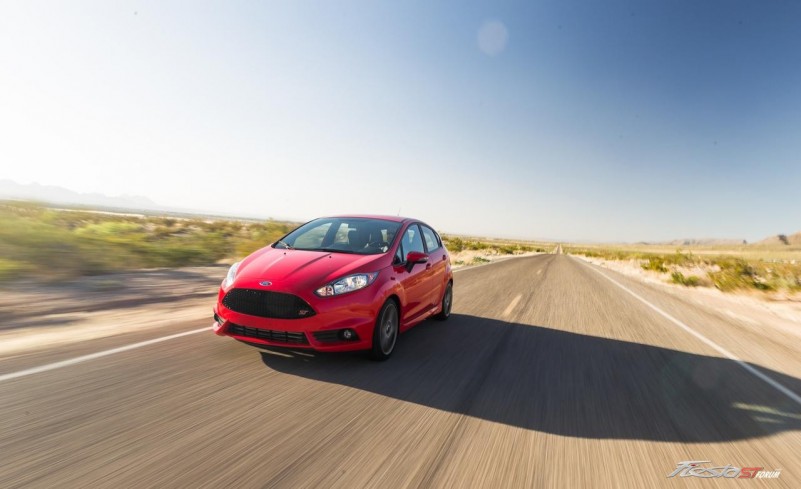
When not throwing the Fiesta around, we had time to notice its penny-pinched interior d?cor. Switchgear that?s fine for a $15,000 Fiesta doesn?t cut it at more than $25,000. It is comfortable and the seating position is great, but the deep dashboard, distant windshield, and unseen hood and fenders all add up to a minivan-like view out the front. One bright spot in the otherwise disagreeable interior is the optional navigation system with the latest, vastly improved MyFord Touch. Fiestas get a small touch screen, but it worked reliably and responded quickly.
Judged by speed, dynamics, and practicality, the Fiesta ST is the clear winner here. Unlike the 500 Abarth and the Cooper S, the Fiesta behaves and moves like a far more expensive sports sedan. It?s a car that?s been utterly transformed to our taste. Waitress, another Hatch-chile cheeseburger, please.
Read more at Car and Driver
